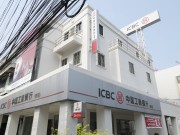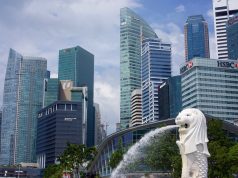Knight Frank APAC Real Estate Outlook 2023: Top 5 Locations for Asian HNWIs 2nd Residence are US, Australia, New Zealand, UK & Singapore, Largest Decline in Residential Volume are Hong Kong (-38.4%), Singapore (-32.3%) & Shenzhen (-20%)
24th December 2022 | Hong Kong
Knight Frank, one of the world’s largest real estate consulting firm, has released the Knight Frank APAC Real Estate Outlook 2023, providing key insights into on real estate, real estate investments, opportunities and challenges in Asia-Pacific. The top 10 locations for 2nd residence (Asian buyers, HNWIs) are United States, Australia, New Zealand, United Kingdom, Singapore, South Korea, Taiwan, Japan, Indonesia and France. In Asia-Pacific, the top 10 locations are Australia, New Zealand, Singapore, South Korea, Taiwan, Japan, Indonesia, India, Philippines and Mainland China. In 2022, the top 3 cities with largest increase in residential sales volume are Kuala Lumpur (+71.9%), Auckland (+ 15.8%), and Tokyo (+14.3%). The top 3 cities with largest decrease in residential sales volume are Hong Kong (-38.4%), Singapore (-32.3%), and Shenzhen (-20%). For Capital Markets investments in 2023, the 4 key drivers are Inflation-hedges real estate, flight-to-quality, rise of dollar real estate investors, and dominance of private and sovereign investors. The top 3 themes influencing investment strategy are Mitigating higher inflation (69%), Income security (67%), and Focus on safe haven markets (55%). The top 5 preferred real estate sectors over the next 18 months are Living Sectors (46%), Office (34%), Logistics (34%), Life Sciences (25%), and Purpose-Built Student Accommodation / PBSA (21%). View key findings below including the 2023 real estate outlook.
“ Top 5 Locations for Asian HNWIs 2nd Residence are US, Australia, New Zealand, UK & Singapore, Largest Decline in Residential Volume are Hong Kong (-38.4%), Singapore (-32.3%) & Shenzhen (-20%) “
Christine Li, Knight Frank Head of Research Asia-Pacific: “With much of the known risks largely priced in and likely to have overshot on current negativity, there remains scope for fundamentals to surprise on the upside, underpinned by the marginal easing of zero-COVID strategy and the lower-than-expected terminal interest rates. As of late, Chinese authorities have lowered the duration of quarantine for inbound travellers, a step in the right direction that could set the tone for more calibration and an eventual exit in 2023/2024. We can afford to be sanguine given that nascent signs of inflation peaking have crept into the Fed’s data watch.”
Kevin Coppel, Knight Frank Managing Director Asia-Pacific: “While the Asia-Pacific economy will face significant headwinds in 2023, it will remain a bright spot amid the shadows cast by the slowing global economy. Economies in the region will once again dominate growth worldwide, which will have implications for its real estate markets. That underlying growth will continue to underpin its attraction to occupiers, while its economic diversity offers ample opportunities for investors to target a range of asset classes to position their portfolios for the post-pandemic landscape.”
Knight Frank APAC Real Estate Outlook 2023

Key Findings
- Top 10 Location for 2nd Residence (Asian Buyers, HNWIs) – United States, Australia, New Zealand, United Kingdom, Singapore, South Korea, Taiwan, Japan, Indonesia, France
- Top 10 APAC Location for 2nd Residence (Asian Buyers, HNWIs) – Australia, New Zealand, Singapore, South Korea, Taiwan, Japan, Indonesia, India, Philippines, Mainland China
- Top 3 Increase in Residential Sales Volume – Kuala Lumpur (+71.9%), Auckland (+ 15.8%), Tokyo (+14.3%)
- Top 3 Decrease in Residential Sales Volume – Hong Kong (-38.4%), Singapore (-32.3%), Shenzhen (-20%)
- Capital Markets Investments (Real Estate) – Inflation-hedges, Flight-to-quality, Rise of Dollar Investors, Dominance of Private and Sovereign Investors
- Top 3 themes influencing investment strategy – Mitigating higher inflation (69%), Income security (67%), Focus on safe haven markets (55%)
- Top 5 real estate sectors over the next 18 months – Living Sectors (46%), Office (34%), Logistics (34%), Life Sciences (25%), Purpose-Built Student Accommodation / PBSA (21%)
- Office 12 Month Rental Outlook Increasing – Tokyo, Guangzhou, Kuala Lumpur, Bangkok, Manila, Ho Chi Minh City
- Office 12 Month Rental Outlook Decreasing- Brisbane, Melbourne, Perth, Sydney, Shanghai, Hong Kong, Taipei, Singapore
- Logistics 12 Month Rental Outlook Increasing – Auckland, Brisbane, Sydney, Melbourne, Hong Kong, Bengaluru, Mumbai, Delhi-NCR, Singapore, Taipei, Ho Chi Minh City, Bangkok
- Logistics for Life Sciences – R&D lab facilities, Manufacturing Facilities, Pharmaceutical Logistics
2023 Outlook
- Key Risk to Growth (Real Estate) – Escalation of conflict in Ukraine, Deterioration of economic conditions in Europe, Hard landing in the US, China remains mired in Capital outflows, Capital outflows turn disruptive, Heightened currency volatility
- Residential Key Challenges – Rising mortgage rates and high inflation dampening demand, Standoff between buyers and sellers resulting in lower transaction volumes
- Residential Key Opportunities – Outbound opportunities from Asian buyers into global markets, Flight to safe haven market with transparent ownership and price growth
- Capital Markets Key Opportunities – Flight to quality and inflation hedge assets, Redevelopment of aged asset to be ESG-compliant
- Capital Markets Key Challenges – Lower returns due to high cost of borrowing and weaker fundamentals, Widening price gap between buyers and sellers, Yields to move out
- Office Key Opportunities – Better space utilisation due to cloudy economic outlook, Flight to quality and agility/flexibility, Enhanced amenities and workplace experience
- Office Key Challenges – Businesses keeping cost in check and CAPEX growth moderates, Shadow space emerges, Potential headcount reduction puts downward pressure on rents and vacancies
- Logistics Key Opportunities – Recessionary fear, normalisation of e-commerce boom, Structural undersupply of high-quality assets
- Logistics Key Challenges – Consolidations and cost savings, New demand drivers emerged from healthcare and life science related sectors
APAC Markets Expected Interest Rate in 2023
- Hong Kong – 5.25% to 6%
- Singapore – 4.5% to 4.8%
- Phillipines – 5.75% to 6%
- New Zealand – 4.5% to 4.8%
- Australia – 3.35% to 3.6%
- South Korea – 3.25% to 3.5%
- India – 6.25% to 6.4%
- Thailand – 2.75% to 3%
- Vietnam – 5% to 6.5%
- Indonesia – 5% to 5.5%
- Malaysia – 2.75% to 3%
- Taiwan – 1.75% to 1.9%
- Japan – Minus 0.1%
- China Mainland – 3.65%
1) Residential
Top 20 Locations for 2nd Residence (Asian Buyers, HNWIs)
- United States
- Australia
- New Zealand
- United Kingdom
- Singapore
- South Korea
- Taiwan
- Japan
- Indonesia
- France
- Canada
- India
- United Arab Emirates
- Italy
- Philippines
- Mainland China
- Thailand
- Hong Kong
- Argentina
- Vietnam
Top APAC Locations for 2nd Residence (Asian Buyers, HNWIs)
- Australia
- New Zealand
- Singapore
- South Korea
- Taiwan
- Japan
- Indonesia
- India
- Philippines
- Mainland China
- Thailand
- Hong Kong
- Vietnam
2023 Residential Property Price Change
Australia / New Zealand
- Brisbane – Decrease
- Melbourne – Decrease
- Perth – Decrease
- Sydney – Decrease
- Auckland – Increase / Decrease
Asia, exclude Southeast Asia
- Beijing – Increase
- Guangzhou – Increase
- Shanghai – Increase
- Shenzhen – Increase
- Hong Kong – Decrease
- Taipei – Increase / Decrease
- Bengaluru – Increase
- Mumbai – Increase
- New Delhi – Increase
Southeast Asia
- Jakarta – Increase
- Kuala Lumpur – No Change / Increase
- Singapore – Increase
- Bangkok – Increase
- Manila – Increase / Decrease
- Ho Chi Minh City – Increase
Residential Sales Volume Year-on-Year Change (Data in June / Q3 2022)
- Kuala Lumpur: +71.9%
- Auckland: + 15.8%
- Tokyo: +14.3%
- Shanghai: +11.1%
- Seoul: +2.6%
- Australia: – 1.5%
- Guangzhou: -11.2%
- Beijing: -27%
- Shenzhen: -20%
- Singapore: -32.3%
- Hong Kong: -38.4%
2) Capital Markets
4 Key Drivers
- Inflation-hedges – Commercial real estate which exhibits income growth potential, diversification benefits and relative stability will see strengthened interest.
- Flight-to-quality – Investors to focus particularly on core, liquid assets in prime locations with attractive yields relative to the cost of debt.
- Rise of Dollar Investors – Increased demand from dollar-denominated investors from North America, the Middle-East, and parts of Asia, looking to take advantage of the strong currency and diversify their portfolios into the core markets of the region
- Dominance of Private and Sovereign Investors – With longer horizons and deep pockets, such investors are prepared to move quickly to secure prime assets while there is limited competition.
Top themes influencing investment strategy
- Mitigating higher inflation – 69%
- Income security – 67%
- Focus on safe haven markets – 55%
- ESG requirements – 33%
- Stronger US Dollar – 19%
Top real estate sectors over the next 18 months
- Living Sectors – 46%
- Office – 34%
- Logistics – 34%
- Life Sciences – 25%
- Purpose-Built Student Accommodation (PBSA) – 21%
- Retail – 21%
- Data Centre – 18%
- Debt – 17%
- Hotels – 16%
- Not Planning to Invest – 8%
- Others – 7%
Strategies to Consider
- Office – Offices remained the main target for investors, as the region led the return to work – mainly focused on newly built offices in safe-haven markets. There remains a good base of all-cash buyers or lowly geared regional core funds keen to buy prime offices with inflation-hedging characteristics when pricing has adjusted. Market: Singapore
- Data centre – Data centre transactions have increased sharply in Asia-Pacific. Driven by tenant demand from cloud service providers moving into Southeast Asia, Australia, and Japan, there is strong demand from global investors to fund developments in these locations. Market: Australia, Japan, Southeast Asia
- Living Sectors – Living sectors tend to perform well in a downturn and possess strong structural fundamentals with good inflation-linked rental growth prospects. Demand will likely increase from offshore investors due to the low borrowing costs and sought after for its resilient income profile. The build-to-rent sector in Australia is poised for growth as major cornerstone investors enter the market, attracted by the solid immigration levels and softer house prices. Market: Australia, Japan
3) Office
Office 12 Month Rental Outlook
Increasing
- Tokyo
- Guangzhou
- Kuala Lumpur
- Bangkok
- Manila
- Ho Chi Minh City
Decreasing
- Brisbane
- Melbourne
- Perth
- Sydney
- Shanghai
- Hong Kong
- Taipei
- Singapore
Unchanged
- Auckland
- Beijing
- Shenzhen
- Bengaluru
- Mumbai
- Delhi-NCR
- Phnom Penh
- Jakarta
Office Renewal
- Completion of premium quality buildings
- Negotiable rental rate
- Short-term lease
For Tenant
- Better negotiating power to demand for advantages terms and clauses
- Lock in rents at current level to keep occupancy cost minimum
- Allows flexibility in future lease decisions
For Landlord
- Maintain occupancy rate in tough leasing market
- Ensure security of steady cashflow
- Potential rent increment opportunity in the future
Office Strategies – Tenant
- Capitalise on the widening window of opportunity for rental negotiation
- Analyse workplace utilisation and redesign the space according to the type of work arrangement endorsed and employees’ behaviours
- Focus on assets of higher calibre that can support flexible workspace design with quality amenities and services
- Implement ESG agenda, especially on the ‘S’ and ‘G’ aspects
Office Strategies – Landlord
- Prioritise occupancy over rents in current market downturn
- Cater to occupiers’ requirements if they are reasonable and feasible to retain tenancy
- Sustainably retrofit older buildings to be in line with ESG requirements in preparation of economic recovery
- Include flexible space in office portfolio
4) Logistics
Logistics – 12 Month Rental Outlook
Increasing
- Auckland
- Brisbane
- Sydney
- Melbourne
- Hong Kong
- Bengaluru
- Mumbai
- Delhi-NCR
- Singapore
- Taipei
- Ho Chi Minh City
- Bangkok
Unchanged
- Beijing
- Shanghai
- Greater Kuala Lumpur
- Manila
- Jakarta
For Tenants
- Plan in advance to relocate/expand footprint in areas with growth potential while minimising spatial needs in cost-inefficient locales
- Engage landlords proactively to get custom-built features according to company’s • Modify property features to meet the requirements of occupants, which helps to operational needs
- Invest in sustainable technology innovation, and enhance portfolios to reflect more assets with these two attributes
For Landlords
- Expand footprint into emerging logistics hubs by developing land banks in places close to new infrastructure or next to rapidly expanding neighbourhoods
- Modify property features to meet the requirements of occupants, which helps to secure large tenants, particularly in markets with sizeable incoming supply
- Modernise ageing logistics facilities in strategic locations to meet occupant demand for advanced amenities and ESG
Life Sciences
- R&D lab facilities are expanding their footprints in science parks across Asia-Pacific
- Manufacturing Facilities – Domestic demand spurring the need for more facilities that are closer to consumers
- Pharmaceutical Logistics – Increasing demand for high specification facilities that improve distribution networks and last mile efficiency
5) 2023 Real Estate Outlook
2023 Key Risks to Growth – Real Estate
- Escalation of conflict in Ukraine
- Worse-than-anticipated deterioration of economic conditions in Europe
- Hard landing in the US
- China remains mired in Capital outflows Heightened economic doldrums
- Capital outflows turn disruptive
- Heightened currency volatility
2023 APAC Real Estate Market Outlook
Key Challenges
Economy
- Interest rates/inflations stay elevated for longer
- Currency volatility
- Geopolitical tensions
Residential
- Rising mortgage rates and high inflation dampening demand
- Standoff between buyers and sellers – lower transaction volumes
Office
- Businesses keeping cost in check and CAPEX growth moderates
- Shadow space emerges
- Potential headcount reduction puts downward pressure on rents and vacancies
Logistics
- Recessionary fear, normalisation of e-commerce boom
- Structural undersupply of high-quality assets
Capital Markets
- Lower returns due to high cost of borrowing and weaker fundamentals
- Widening price gap between buyers and sellers
- Yields to move out
Key Opportunities
Economy
- Potential for interest rate cycle to peak
- Stimulus to boost GDP growth
Residential
- Outbound opportunities from Asian buyers into global markets
- Flight to safe haven markets, with transparent ownership and price growth
Office
- Better space utilisation due to cloudy economic outlook
- Flight to quality and agility/flexibility
- Enhanced amenities and workplace experience
Logistics
- Consolidations and cost savings
- New demand drivers emerged from healthcare and life science related sectors
Capital Markets
- Flight to quality and inflation hedge assets
- Redevelopment of aged asset to be ESG-compliant
Sign Up / Register
Caproasia Users
- Manage $20 million to $3 billion of assets
- Invest $3 million to $300 million
- Advise institutions, billionaires, UHNWs & HNWs
Caproasia Platforms | 11,000 Investors & Advisors
- Caproasia.com
- Caproasia Access
- Caproasia Events
- The Financial Centre | Find Services
- Membership
- Family Office Circle
- Professional Investor Circle
- Investor Relations Network
Monthly Roundtable & Networking
Family Office Programs
The 2025 Investment Day
- March - Hong Kong
- March - Singapore
- July - Hong Kong
- July - Singapore
- Sept- Hong Kong
- Sept - Singapore
- Oct- Hong Kong
- Nov - Singapore
- Visit: The Investment Day | Register: Click here
Caproasia Summits
- The Institutional Investor Summit
- The Investment / Alternatives Summit
- The Private Wealth Summit
- The Family Office Summit
- The CEO & Entrepreneur Summit
- The Capital Markets Summit
- The ESG / Sustainable Investment Summit










































